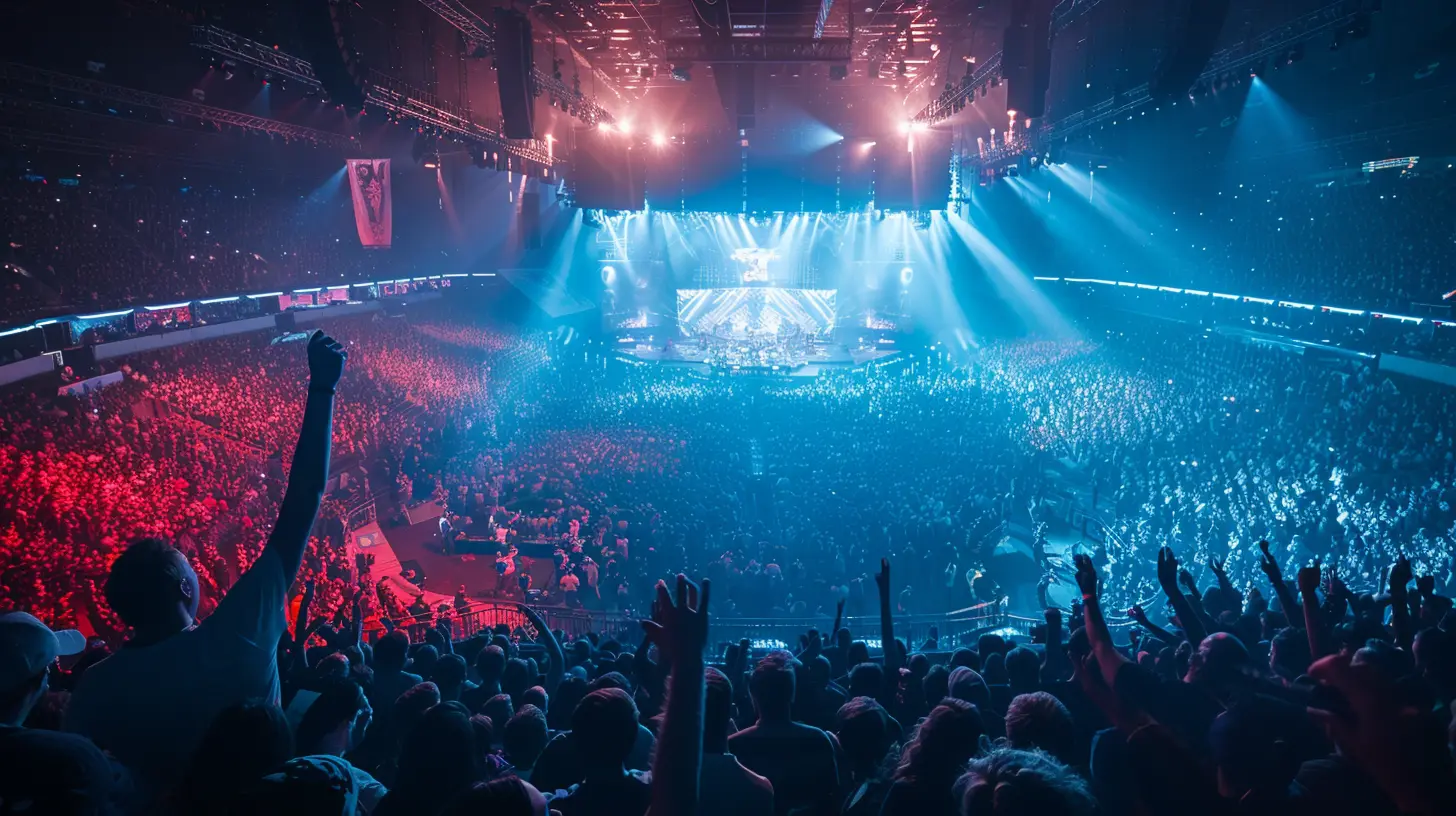The Role of Analytics in Modern Esports Teams
1 September 2025
Esports has come a long way from being a casual hobby for gamers. Today, it's a multi-billion-dollar industry with a fierce competitive edge. Just like in traditional sports, the difference between winning and losing often comes down to the smallest decisions. And that’s where analytics comes in — not as a fancy buzzword, but as a game-changing tool for modern esports teams.
From breaking down gameplay footage to tracking player fatigue, analytics is quietly becoming the MVP behind the scenes. Whether you're a casual fan or someone aiming to go pro, understanding how data is shaping the future of esports can seriously level up your game knowledge.
Let’s dive into how analytics is revolutionizing the esports landscape, one match at a time.
Why Analytics Matter in Esports
So, what’s the big deal with analytics in esports? Isn’t gaming just about raw skill, reaction time, and teamwork?Well, yes... but it’s also a whole lot more than that.
Analytics adds a fresh layer of insight that helps teams make smarter decisions — from drafting the right players to picking perfect in-game strategies. It’s like having a coach with x-ray vision who sees through the chaos of the game and pulls out patterns that humans might miss.
Take League of Legends or Valorant for example. There are so many variables — map control, team composition, player rotations, cooldowns, enemy tendencies. Trying to process all of that manually is a nightmare. But plug in analytics, and suddenly blind spots become opportunities.
The Data-Driven Edge: What Esports Teams Analyze
Modern esports teams leave no stone unturned when it comes to numbers. Here's what they’re usually looking at:1. Player Performance Metrics
Let’s start with the basics. Just like a football coach tracks goals and assists, esports coaches look at KDA (Kills/Deaths/Assists), accuracy, damage per round, objective control, and more.But here's the twist — it's not just about averages. It’s about context.
- How do players perform under pressure?
- Do they tilt after a loss?
- Are they peaking at the right times?
That kind of deep insight allows coaches to tailor training regimens uniquely for each player.
2. In-Game Strategy and Decision Making
The beauty of analytics? It zooms in on the "why" behind team decisions.Was that aggressive push a good call? Should they have rotated sooner? What does the opponent typically do after a failed eco round?
You don’t just analyze statistics — you break down behavior. Coaches can use heat maps, enemy tendencies, and frame-by-frame rundowns to sharpen tactics and adjust in real time.
3. Opponent Scouting Reports
Just like in the NFL or NBA, esports teams build scouting reports on their enemies. And not just manually — data tools help flag patterns in their strategies.- Do they favor early aggression?
- Is there a player who chokes under pressure?
- Do they struggle in post-plant situations?
Knowing what your rivals are likely to do lets you pre-emptively counter them. That’s chess-level gameplay right there.
4. Health and Fatigue Tracking
Burnout in esports is real. Analytics doesn’t stop with gameplay — it also taps into biometric data.Top-tier organizations use tools like:
- Eye-tracking
- Heart-rate monitors
- Sleep pattern trackers
Why? Because a tired brain can’t clutch rounds. Monitoring this data ensures players are sharp when it matters most.
Real-Life Examples: Analytics in Action
Let’s throw in a few examples to make this hit home.Team Liquid and League of Legends
Team Liquid isn’t just a beast in the LCS — they’re also big on analytics. Their coaching staff uses match data to customize drills, analyze lane matchups, and even predict enemy champion picks. They don’t just play the game. They dissect it.Overwatch League and Blizzard’s Tools
Blizzard created its own analytics engine for the Overwatch League, which tracks every movement and action from players. The league’s analysts use it to enhance broadcasts and help teams refine strategies mid-season.CS:GO and Strats.gg
Strats.gg is a prime example of a third-party platform changing the game. It allows CS:GO teams to upload match demos, view heatmaps, timing data, and flash effectiveness – literal data goldmines that give teams surgical precision in their planning.
The Role of Analysts: The Esports Think Tank
Behind every great esports team today is a squad of brainiacs pouring over data — the analysts.These folks are the unsung heroes. They’re the ones coding stat-scrapers, building spreadsheets thicker than novels, and giving coaches the play-by-play from an entirely different angle.
Analysts turn raw data into actionable insights. They help:
- Optimize scrim schedules
- Break down the mental mistakes
- Find the "money plays" that net consistent wins
Think of them as the team's GPS — guiding the squad through competitive chaos one map at a time.
The Tech Stack: Tools Modern Esports Teams Use
Okay, so where does all this magic come from? It’s not just Excel sheets and guesswork.Here’s what goes into the modern esports analytics toolkit:
- Computer Vision Software: Tracks player positioning and cursor movement.
- Machine Learning Models: Predicts likely outcomes and suggests optimal strategies.
- Biometric Wearables: Monitors physical and mental well-being.
- Custom Dashboards: Real-time stats for coaches and players.
- AI-Powered VOD Review Tools: Analyzes match footage in minutes instead of hours.
This isn’t the future. It’s happening now.
How Analytics Impacts Team Management
Coaching isn’t just about fiery speeches and hype. In esports, it's about precision.Analytics helps not just with gameplay, but with overall team management:
- Who should start the next match?
- Does a player’s performance dip during back-to-backs?
- Should you recruit a new AWPer based on their clutch stats?
Analytics can even be tied into salary decisions. After all, if the numbers say a player's impact is slipping... well, the data doesn’t lie.
But Wait — Is It All Too Much?
Here’s a fair question: “Is esports becoming too robotic?”Let’s be real — data is powerful, but it’s not magic. You still need instinct. You still need chemistry. Analytics is there to guide, not replace human judgment.
In fact, the best teams use data as a conversation starter, not a final answer. It’s the perfect marriage of man and machine: brains plus numbers equals brilliance.
The Future of Esports Analytics
As esports continues to get more competitive (and more lucrative), expect analytics to go even deeper.- AI Coaches? Don’t laugh — prototypes are already in testing.
- Real-Time In-Game Advising? With overlays that suggest plays?
- Fan-Facing Data Visualizations? Similar to how the NFL shows play percentages and expected yards?
We're heading into an era where data enhances every layer of the ecosystem — from pro teams to esports betting to fantasy leagues.
Final Thoughts: Data Is the New Meta
Plain and simple: if you're not using analytics in esports, you're already behind. It’s that serious.Whether you're a coach, a player, or just a die-hard fan, understanding the data side of the game gives you an entirely new lens to look through. It’s not just about how fast you click — it’s about how smart you click.
So next time you see a perfect team wipe or an insane rotation, remember — behind that play might be hours of data analysis, cold numbers, and one genius analyst who saw it coming five matches ago.
Welcome to the new age of competitive gaming. This, my friend, is the data era of esports.
all images in this post were generated using AI tools
Category:
EsportsAuthor:

Uziel Franco
Discussion
rate this article
1 comments
Zedric Hernandez
Analytics in esports: where numbers meet strategy, transforming gut feelings into data-driven victories. The future of gaming is here!
September 30, 2025 at 12:00 PM

Uziel Franco
Thank you! Analytics truly revolutionizes esports by turning intuition into actionable insights, paving the way for strategic advancements and competitive success. Exciting times ahead!


